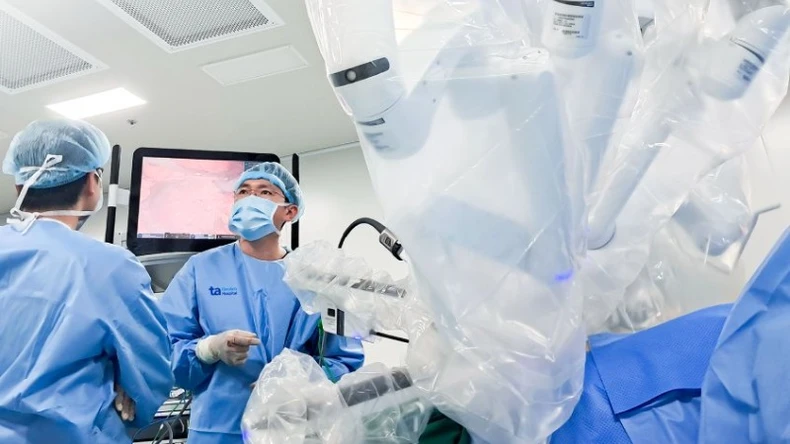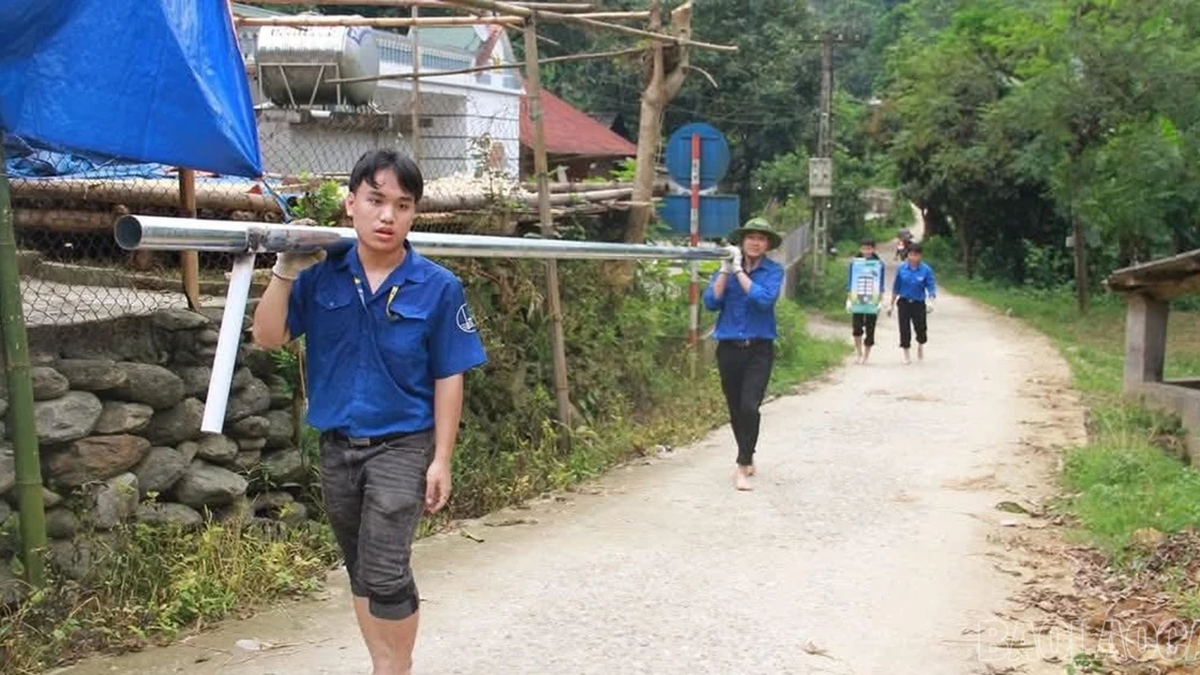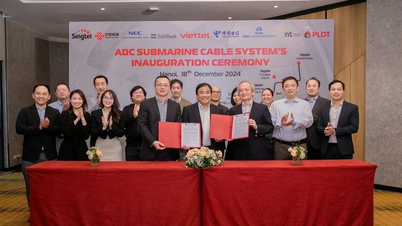Patient D.Q.Tr. (75 years old, Hau Giang ) was discovered to have a right kidney tumor during a routine health check-up. At the age of 75, he had many underlying diseases such as diabetes, high blood pressure, fatty liver, and obesity. The patient had an intestinal malformation causing the entire intestine to lie above the liver, instead of below and behind the liver as usual.
Associate Professor, Doctor Vu Le Chuyen, Director of the Center for Urology-Nephrology-Andrology, Tam Anh General Hospital , Ho Chi Minh City, said that this injury prevents doctors from accessing the kidney through the peritoneum, and if surgery is performed using the traditional method, it will be dangerous for the patient.
The team could not push all the intestines back to reach the kidney, so they decided to create a retroperitoneal space. This is a difficult technique, requiring the surgeon to operate from behind, not to mention the tumor was in the front.
The entire team determined that without the Da Vinci Xi robot system - the most modern new generation in Southeast Asia, it would be very difficult to perform the surgery, because with the distance between the arms only needing 6cm (compared to 8cm in the old generation), creating a new retroperitoneal cavity is feasible. After consultation, the doctors agreed to choose the option of completely removing the tumor with the Da Vinci Xi robot to preserve maximum kidney function.
According to Dr. Phan Huynh Tien Dat, with a tumor located close to a large blood vessel like this, if using open surgery or conventional endoscopic surgery, the risk of bleeding and damage to healthy tissue is very high. If using an old generation robot, there is no built-in blood vessel welding and cutting tool, so it must be manually sutured after cutting the blood vessel, which takes time and is more likely to cause blood loss. Meanwhile, the Da Vinci Xi robot can cut, squeeze, and seal the blood vessel immediately.
 |
The doctors performed surgery. |
Starting the surgery, Dr. Vu Le Chuyen used his hand to touch the illustration of the patient's body on the touch screen, selected the position of the right kidney and the approach direction from the back to create the retroperitoneal cavity. Immediately, the robot system automatically aligned and suggested the appropriate robot position, reducing the risk of misplacement, causing unnecessary damage to the surgery.
After placing 4 trocars in a straight line (the entrance for surgical instruments) suitable for Asian physiques, Associate Professor Vu Le Chuyen connected to the Da Vinci Xi robot to transmit a Vietnamese voice to two assistant surgeons through the sound system on the robot arm and the doctors' headphones to instruct: "Arm number 1 places the bipolar cauterizing instrument. Arm number 2 places the camera. Arm number 3 places the scissors. Arm number 4 has the tissue retractor."
The team of anesthesiologists continuously monitors arterial blood pressure, adequate anesthesia, skin temperature, airway index, heart rate, etc. to ensure the safety of the surgery.
The surgery was completed without complications in just one hour. The patient regained consciousness quickly and was able to sit up and talk normally after just one day. The incision was small, painless, and recovery was quick.
Associate Professor, Dr. Vu Le Chuyen affirmed that robotic surgery opens an important turning point for the surgical industry, especially for complex surgeries in remote and difficult-to-reach areas. The Da Vinci Xi robot helps improve accuracy, reduce trauma, shorten surgery and recovery time, and minimize the risk of complications.
Especially in Urology-Nephrology, the Da Vinci Xi robot has proven to be extremely effective in surgeries requiring high precision such as partial nephrectomy, total nephrectomy, prostatectomy, ureteroplasty, or bladder resection and reconstruction. This technology is very supportive in the treatment of complex diseases such as kidney cancer, prostate cancer, bladder cancer, providing the ability to manipulate with almost absolute precision in important anatomical areas.
Source: https://nhandan.vn/robot-support-bac-si-phau-thuat-khoi-u-than-phuc-tap-post881868.html



































































































Comment (0)